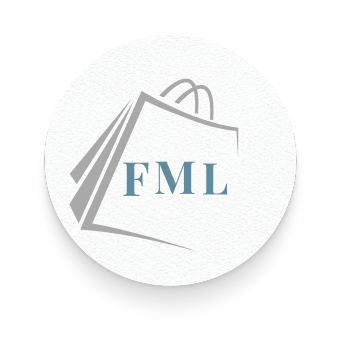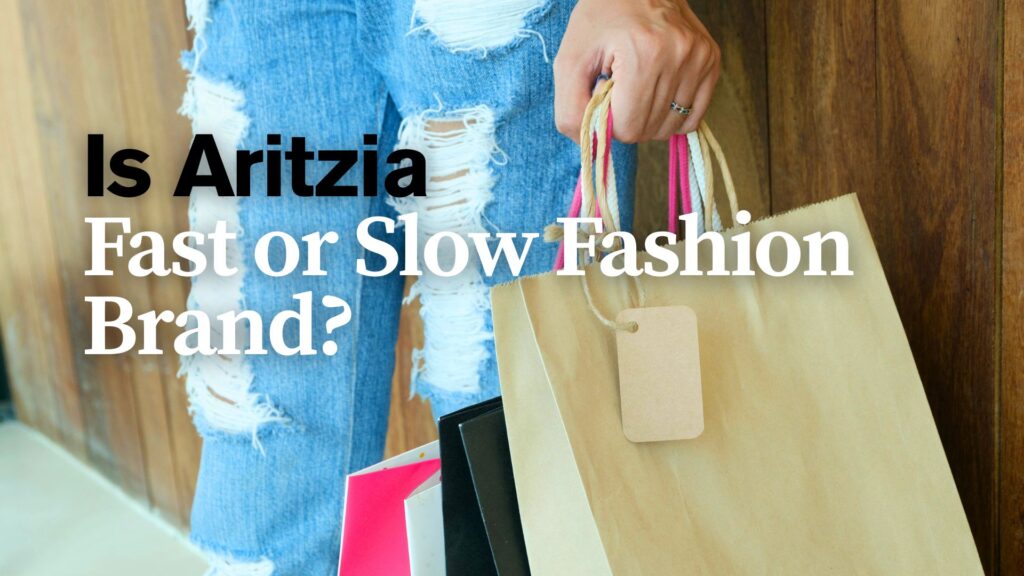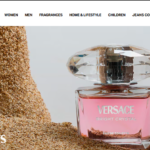Canadian clothing retail brand Aritzia is known for its luxurious but reasonably priced offerings. It’s a woman-centric brand that focuses on making ‘everyday luxury’ products. Lately, many are also identifying it as a slow fashion brand.
Recently, the brand has also talked about responsible sourcing and eco-friendly materials. They have also released a range of products made from sustainable materials.
The world of sustainable fashion brands is growing fast. Aritzia definitely doesn’t want to be left out. So, are they really doing enough to make the fashion world greener?
We analysed their market position and activities over the years, to check the effectiveness of their sustainability drive.
Here’s what we found!
Is Artizia a Fast Fashion Brand?
We found that Aritzia is not a typical fast fashion brand like Shein or H&M. However, it doesn’t fully qualify as a slow fashion brand either.
It occupies a middle ground. Here’s how:
Why Aritzia isn’t strictly fast fashion:
- Relatively slower production speed: While Aritzia releases new styles regularly and updates collections seasonally to align with trends, its product turnaround isn’t as rapid as ultra-fast fashion brands that introduce new items daily or weekly.
- Emphasis on quality (general views and actual): Aritzia positions itself as an “everyday luxury” brand with higher prices than typical fast fashion. There’s a greater emphasis on the quality of materials and construction, aiming for pieces that last longer than ultra-fast fashion items.
- Timeless elements: While trend-conscious, Aritzia’s collections often include more classic and versatile clothing that can remain in a wardrobe for multiple seasons. It’s unlike the short-time usage nature of some fast fashion trends.
Why Aritzia isn’t also strictly a slow fashion brand:
- Volume of production: Despite the higher quality and price, Aritzia still mass-produces its clothing to cater to a broad market. Slow fashion brands typically have smaller production runs.
- Trend-driven: Aritzia’s collections are still heavily influenced by current fashion trends. They often encourage consumers to buy new items to stay stylish, which contradicts the core principle of sustainable fashion. Slow fashion is about buying less and buying better.
- Transparency concerns: Like many fast fashion brands, Aritzia has faced criticism for a lack of full transparency in its supply chain. This factor makes it difficult to fully assess their ethical labor practices and environmental impact.
- Marketing strategies: Aritzia heavily utilizes influencer marketing, a common tactic in the fast fashion industry to drive sales and encourage people to buy more.
To put it simply, Aritzia is a brand that offers a step up in quality and design from ultra-fast fashion but still operates on a model that encourages regular purchases based on trends, even if the clothes are intended to last longer.
Can Aritzia Be Called a Sustainable Fashion Brand?
Analyzing Aritzia’s practices and public statements reveals a rather complicated picture regarding its qualification as a sustainable fashion brand.
These are areas where Aritzia shows some commitment to sustainability:
They Use Some Lower-Impact Materials:
Aritzia has started incorporating materials like organic cotton, recycled polyester, and TENCEL™ Lyocell into some of its garments. They also source responsible wool, cashmere, and down with certifications like GOTS, GRS, OCS, RWS, RDS, and GCS.
Reduced-Impact Packaging:
Aritzia states that 100% of its retail and e-commerce packaging contains recycled or FSC-certified content.
Operational carbon neutrality:
Aritzia claims to have achieved carbon neutrality in its direct operations (Scope 1 and 2 emissions) through the purchase of renewable energy credits and carbon offsets.
Supplier environmental monitoring:
Aritzia uses the Higg Facility Environmental Module (Higg FEM) to assess and monitor the environmental performance of its finished-goods suppliers. They also collaborate with suppliers on improvement plans.
Restricted Substances List (RSL):
Aritzia has an RSL that outlines chemicals not permitted in their products to minimize environmental and health risks.
Waste reduction initiatives:
Aritzia has a stated goal to divert at least 90% of waste from landfills across its operations.
Transparency efforts:
Aritzia publishes annual ESG (Environmental, Social, and Governance) reports outlining their initiatives and progress. They also provide some information about their supply chain partners.
Significant Areas Where Aritzia Falls Short Of Being A Truly Sustainable Fashion Brand
Lack of ambitious and specific reduction targets:
While they report on emissions, there’s a lack of clearly defined, science-based targets for reducing greenhouse gas emissions across their entire value chain (especially Scope 3, which is the most significant for fashion brands).
Limited supply chain transparency:
Despite some disclosure, there’s still a lack of detailed information about their entire supply chain, including fabric and trim suppliers, making it difficult to fully assess environmental and social impacts at all stages of production.
Insufficient evidence of fair labor practices:
While Aritzia has a supplier code of conduct that includes provisions for fair wages and working conditions, there’s limited evidence of consistent and thorough monitoring and enforcement of these standards, including ensuring living wages are paid.
They received a “Not Good Enough” rating for people on Good On You due to limited supply chain certification. The low rating was also due to a lack of evidence of financial security for suppliers or support for diversity and inclusion in the supply chain.
Continued reliance on synthetic materials:
A significant portion of Aritzia’s collections still uses synthetic materials like polyester, which are derived from fossil fuels and contribute to microplastic pollution. While they are increasing the use of recycled synthetics, the overall reliance remains high.
No robust circularity initiatives as a sustainable fashion brand:
There’s no publicly available information about garment take-back programs or repair services to promote product longevity and reduce textile waste. They probably do not have programs to keep products out of landfills.
Concerns about greenwashing:
Some critics argue that Aritzia’s sustainability messaging lacks concrete evidence and may be a form of greenwashing, where marketing efforts overstate the brand’s actual environmental and social impact. Their “Not Good Enough” rating reflects a lack of greenhouse gas emission reduction targets.
Moreover, their actions are insufficient to eliminate hazardous chemicals or protect biodiversity.
Their marketing is for driving consumption:
Despite some focus on quality, Aritzia’s marketing strategies still encourage frequent purchases, which is inherently unsustainable.
Conclusion on Aritzia’s sustainability:
Based on the available information, Aritzia does not currently qualify as a sustainable fashion brand. They have made some positive steps towards using lower-impact materials, reducing packaging waste, and achieving operational carbon neutrality.
However, their efforts are not comprehensive or ambitious enough to have any great environmental and social impact across their entire value chain.
What Aritzia Needs To Do To Become A Truly Slow Fashion Brand:
- Set clear, measurable, and science-based targets for reducing greenhouse gas emissions across all scopes.
- Significantly improve supply chain transparency, providing detailed information about all tiers of suppliers and their environmental and social practices.
- Implement and rigorously monitor fair labor practices to ensure living wages and safe working conditions.
- Increase the use of truly sustainable and circular materials and reduce reliance on synthetic fibers.
- Develop and promote circular business models, such as garment take-back and repair programs.
- Ensure their marketing aligns with sustainable consumption patterns, encouraging quality over quantity.
- Obtain certifications from reputable government or non-government organizations to validate their sustainability claims.
- Define clear and measurable long-term targets as a slow fashion brand.
Conclusion
Aritzia has demonstrated some commitment to addressing environmental and social issues. They have just started their journey towards becoming a slow fashion brand.
However, there is significant room for improvement before the brand can be considered truly sustainable. Based on our findings, there is really a long way to go.
Consumers need to be cautious yet optimistic about their sustainability claims. They should demand greater transparency and more impactful actions. If the brand follows our recommendations, it can become a wholesome sustainable fashion company.



